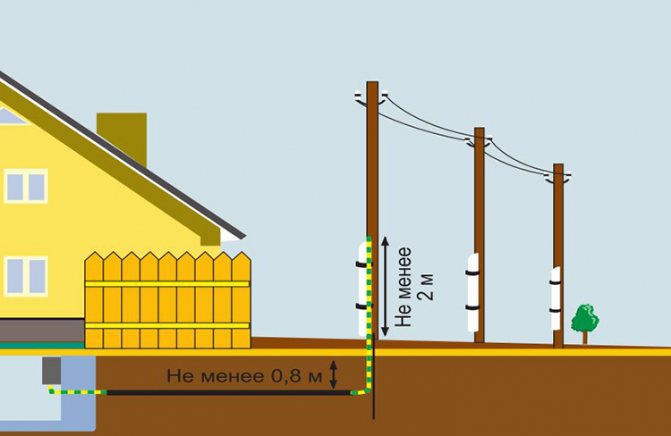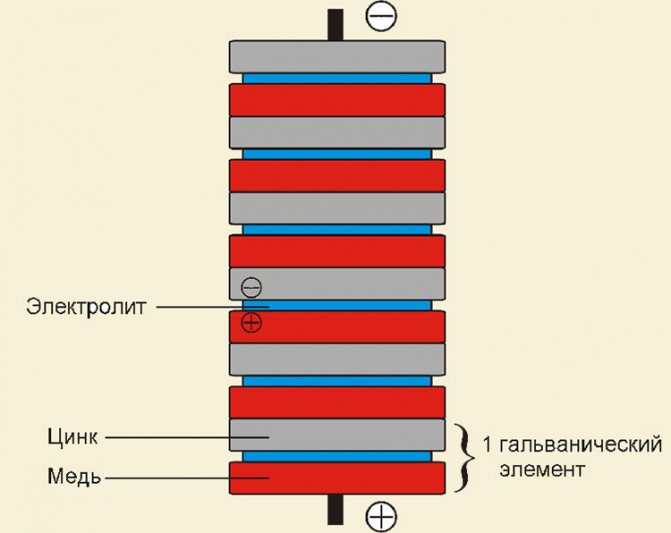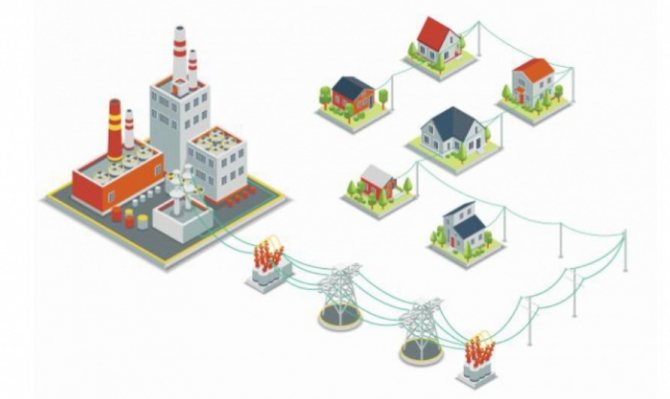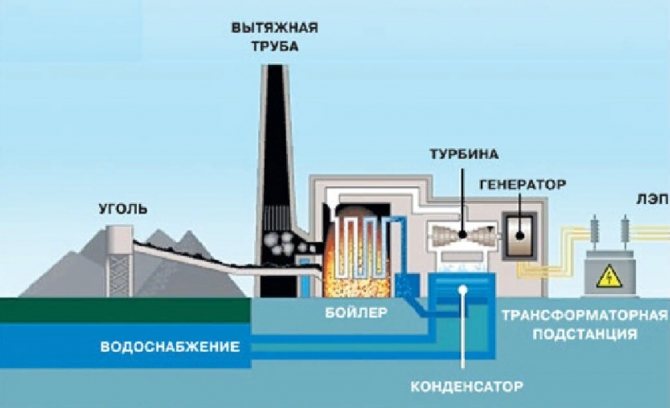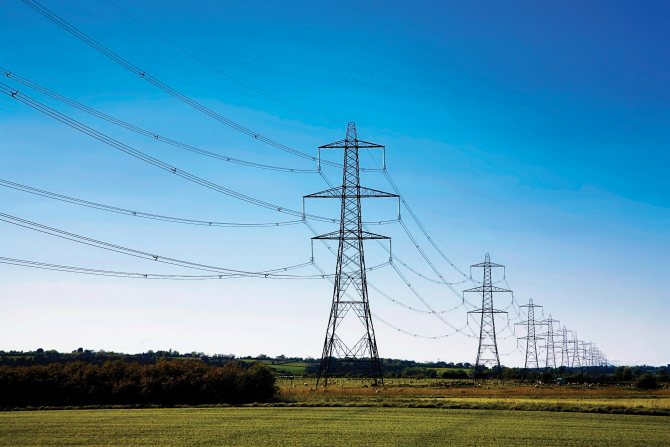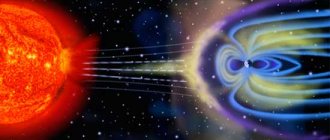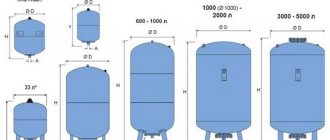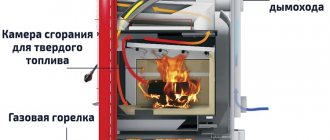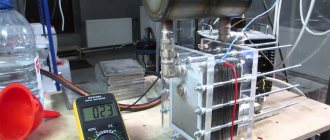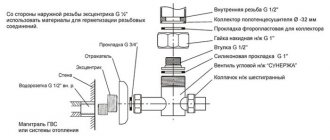Efficiency issue
Getting electricity from the earth is shrouded in myths - materials are regularly posted on the Internet on the topic of obtaining free electricity through the use of the inexhaustible potential of the planet's electromagnetic field. However, numerous videos in which self-made installations extract electricity from the ground and make multi-watt light bulbs shine or electric motors spin are fraudulent. If generating electricity from the earth were so efficient, nuclear and hydropower would be a thing of the past.
However, it is quite possible to get free electricity from the earth's shell and you can do it yourself. True, the current received is enough only for LED backlighting or for slowly recharging a mobile device.

Voltage from the Earth's magnetic field - is it possible !?
To obtain current from the natural environment on a permanent basis (that is, we exclude lightning discharges), we need a conductor and a potential difference. Finding the potential difference is easiest in the earth, which unites all three media - solid, liquid and gaseous. By its structure, the soil is solid particles, between which there are water molecules and air bubbles.
It is important to know that the elementary soil unit is a clay-humus complex (micelle), which has a certain potential difference. The outer shell of the micelle accumulates a negative charge, and a positive one forms inside it. Due to the fact that the electronegative shell of the micelle attracts ions with a positive charge from the environment, electrochemical and electrical processes continuously proceed in the soil. By this, the soil compares favorably with the water and air environment and makes it possible to create a device for generating electricity with your own hands.
Wiring design
Design documentation for connecting a private house to the dashboard is developed by an organization licensed for this type of activity. On the basis of the project, an approval procedure is carried out with the company that serves the local power grids. The plan includes wiring diagrams inside the house. No one except the owner can better determine the location of individual connection devices. Therefore, before starting work, it is recommended to compile a list of all devices and mechanisms that need power supply.
To simplify the task, it is recommended to use the advice of experts:
• a plan needs to be drawn up for each separate room, including outbuildings and landscape design;
• provide for the factor of increasing the load (where and how additional devices will be connected);
• designate all power points on improvised drawings made to scale (this will help to later correctly calculate the footage of wires and cables);
• type of heating in a private house (whether additional heating is required with the help of electrical appliances);
• hot water supply source;
• type of wiring (open / closed).
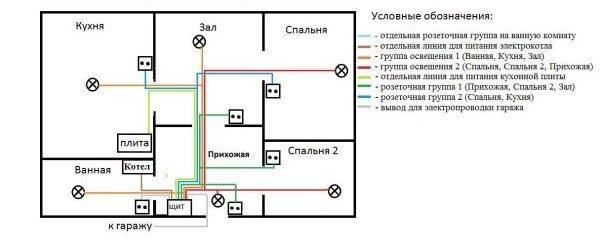

Wiring diagram in a private house
Method with two electrodes
The easiest way to get electricity at home is to use the principle by which classic salt batteries are arranged, where galvanic steam and electrolyte are used. When rods made of different metals are immersed in a salt solution, a potential difference is formed at their ends.
The power of such a galvanic cell depends on a number of factors.
including:
- section and length of electrodes;
- the depth of immersion of the electrodes in the electrolyte;
- the concentration of salts in the electrolyte and its temperature, etc.
To get electricity, you need to take two electrodes for a galvanic pair - one made of copper, the other made of galvanized iron. The electrodes are immersed in the ground to a depth of about half a meter, placing them at a distance of about 25 cm, relative to each other. The soil between the electrodes should be well spilled with a salt solution. By measuring the voltage at the ends of the electrodes with a voltmeter after 10-15 minutes, you can find that the system gives a free current of about 3 V.


Extraction of electricity using 2 rods
If you carry out a series of experiments at different sites, it turns out that the voltmeter readings vary depending on the characteristics of the soil and its moisture content, the size and depth of the electrode installation. To increase efficiency, it is recommended to limit the contour where the saline will be poured with a piece of pipe of a suitable diameter.
Attention! A saturated electrolyte is required, and this salt concentration makes the soil unsuitable for plant growth.
Power lines
It is worth talking about which networks are used to transmit electricity. From the power plant to the final consumer, electricity goes not only through the step-up transformer and high-voltage lines. If you look at the modern city from above, you will notice a whole bundle of wires forming a single network.
To get to the consumer, the current from the high-voltage lines re-enters the transformer, but this time the voltage is reduced. After that, it is fed to the distribution network and diverges to industrial enterprises that have their own substation to obtain the voltage they need, to city substations, which disband electricity through main cables and to regional substations.
It will be interesting to you The principle of operation of the current relay and types of devices
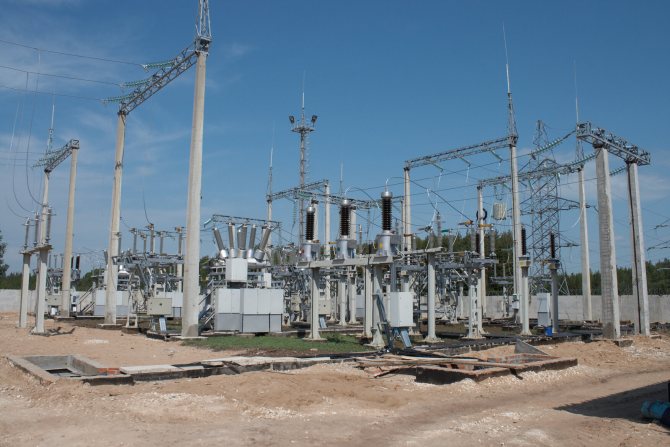

City substation
From district substations through power lines, electricity is supplied to private, apartment buildings and infrastructure facilities. In sleeping quarters, cables from substations are mainly laid underground, from where they go to the entrance shield, which further distributes current to each outlet and light bulb in the house.
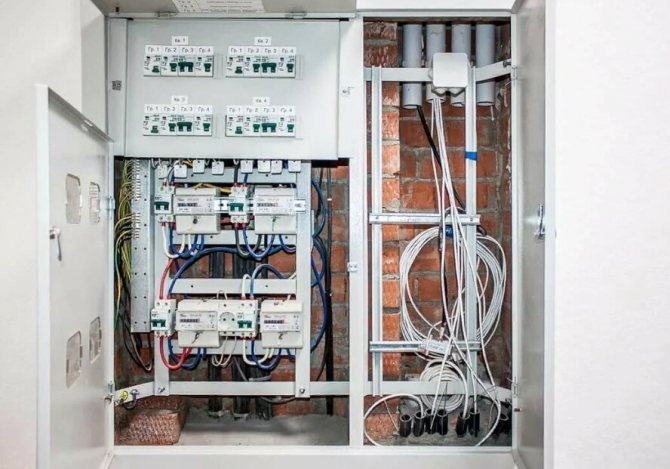

High-rise building power box
Zero wire method
The voltage is supplied to a residential building using two conductors: one of them is phase, the other is zero. If the house is equipped with a high-quality grounding loop, during the period of intensive electricity consumption, part of the current goes through the grounding into the ground. By connecting a 12 V light bulb to the neutral wire and ground, you will make it glow, since the voltage between the zero and ground contacts can reach 15 V. And this current is not recorded by the electric meter.


Extraction of electricity using a neutral wire
The circuit, assembled according to the principle of zero - energy consumer - earth, is quite working. If desired, a transformer can be used to compensate for voltage fluctuations. The disadvantage is the instability of the appearance of electricity between zero and ground - this requires that the house consumes a lot of electricity.
Note! This method of obtaining free electricity is suitable only in a private household. Apartments do not have reliable grounding, and pipelines of heating or water supply systems cannot be used as such. Moreover, it is forbidden to connect the ground loop to the phase to obtain electricity, since the grounding bus is energized at 220 V, which is deadly.
Despite the fact that such a system uses the earth for work, it cannot be attributed to the source of earth's electricity. How to get energy using the electromagnetic potential of the planet remains open.
How to do it yourself
The sets of equipment described above are quite expensive, so creative people with engineering ingenuity sometimes have thoughts about how to make this or that device with their own hands.
In order to make a unit capable of producing electrical energy using alternative energy sources, it is necessary:
- Have basic knowledge in electrical engineering and electrical networks;
- Possess the skills of working with manual mechanical and electrical tools;
- Be able to work with a soldering iron;
- Have free time and, most importantly, desire, to create your own device capable of generating electricity.
We suggest that you familiarize yourself with How to sew a doll on a kettle with your own hands Patterns
If, as a source of energy, choose the sun's rays, then it is necessary to make a receiving panel - a solar battery. To do this, you can go in several ways, these are:
- Purchase photocells and connect them in a certain way (performed by soldering). Make a panel housing, in accordance with the dimensions of the assembled receiver, into which the photocells should be placed. With such an embodiment, it is possible to produce a sufficiently effective device that can provide electrical energy to a small summer cottage that is not used for a long time.
- With a low load power, when you need to charge a cell phone or other electronic device, you can make a solar panel from used diodes or transistors.
- When using transistors, the caps of the transistors are cut off and the transistors themselves are connected in series. Transistors are placed in a separate case, leads are soldered to their ends. The operation of the device is carried out when sunlight hits the "p-n" junction of the transistors.
- When using diodes, a large number of them and an electronic board are required, which is used as a substrate. The upper part of the diodes is cut off and using a soldering iron, the crystal is removed from the case. Crystals are sequentially soldered on a substrate in separate blocks. The blocks are connected in parallel.
- Batteries and electronic devices (charge controller and inverter), if necessary, are best purchased, although electronic devices can also be made by yourself if desired. If you choose wind, water, biofuel and earth energy as a source of energy, then the manufacture of technical devices capable of generating their own electricity is also possible.
The energy of the magnetic field of the planet
The earth is a kind of spherical capacitor, on the inner surface of which a negative charge accumulates, and on the outside - a positive one. The atmosphere serves as an insulator - an electric current passes through it, while the potential difference is preserved. The lost charges are replenished by the magnetic field, which serves as a natural electric generator.
How to get electricity from the ground in practice? Basically, you need to connect to the generator pole and establish a reliable ground.
A device that receives electricity from natural sources must consist of the following elements
:
- conductor;
- the ground loop to which the conductor is connected;
- emitter (Tesla coil, high voltage generator that allows electrons to leave the conductor).
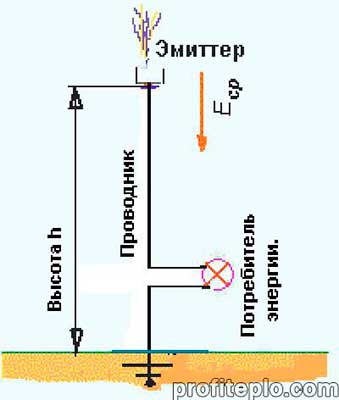

Electricity generation scheme
The upper point of the structure, on which the emitter is located, should be located at such a height that, due to the difference in potentials of the planet's electric field, electrons rise up the conductor. The emitter will release them from the metal and release them in the form of ions into the atmosphere. The process will continue until the potential in the upper atmosphere becomes level with the electric field of the planet.
An energy consumer is connected to the circuit, and the more efficiently the Tesla coil works, the higher the current in the circuit, the more (or more powerful) current consumers can be connected to the system.
Since the electric field surrounds grounded conductors, which include trees, buildings, various high-rise structures, in the city limits the upper part of the system should be located above all existing objects. It is not realistic to create such a structure with your own hands.
Related videos:
We extract electricity from lemon, potatoes and vinegar
Juicy fruits, young potatoes and other food products can serve as food not only for people, but also for electrical appliances. To get electricity from them, you need a galvanized nail or screw (that is, almost any nail or screw) and a piece of copper wire. To record the presence of electricity, a household multimeter will come in handy, and an LED lamp or even a fan powered by batteries will help to more clearly demonstrate success.


Lemon Battery Mash the lemon in your hands to break down the internal baffles, but do not damage the skin. Insert the nail (screw) and copper wire so that the electrodes are as close to each other as possible, but not touching. The closer the electrodes are, the less likely they are to be separated by a partition inside the fruit. In turn, the better the ion exchange between the electrodes inside the battery, the greater its power.
The essence of the experiment was to place the copper and zinc electrodes in an acidic environment, be it a lemon or a vinegar bath. The nail will serve as a negative electrode, or anode. We designate the copper wire as a positive electrode, or cathode.
In an acidic environment, an oxidation reaction occurs on the surface of the anode, during which free electrons are released. Each zinc atom leaves two electrons. Copper is a strong oxidizing agent and it can attract electrons released by zinc. If you close an electrical circuit (connect a light bulb or a multimeter to an improvised battery), electrons will flow from the anode to the cathode through it, that is, electricity will appear in the circuit.
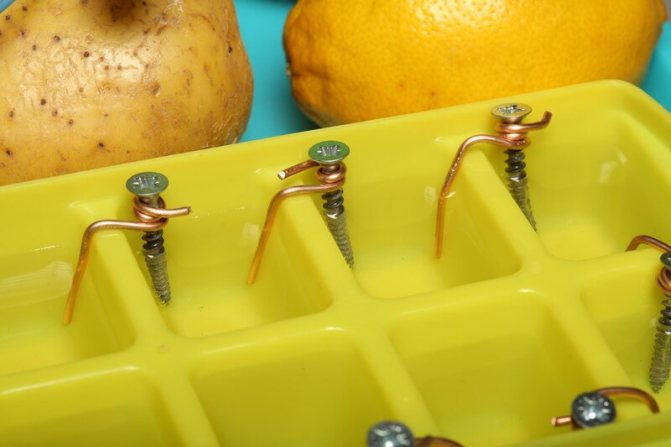

Potato battery Potato is a naturally excellent body and electrolyte for a galvanic cell. Potatoes consistently gave us a voltage of more than 0.5 V from one cell, while the lemon showed the result in the region of 0.4 V. Voltage champion - vinegar: 0.8 V per cell. To get more voltage, connect the cells in series. To supply more powerful consumers (fan) - in parallel.
On the surface of the cathode, that is, the negatively charged electrode, a reduction reaction takes place: the cations (positively charged ions) of hydrogen contained in the acid receive the missing electrons and turn into hydrogen, which comes out in the form of bubbles. A concentration of anions (negatively charged ions) of the acid appears near the cathode, and zinc cations near the anode. To balance the charges in the electrolyte, it is necessary to ensure ion exchange between the electrodes inside the battery.
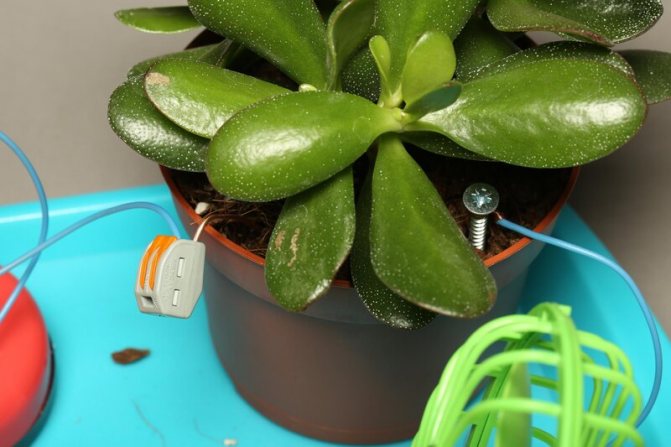

Earthen battery Increased soil acidity is a problem for agronomists, but a joy for electrical engineers. The content of hydrogen and aluminum ions in the earth allows you to literally stick two sticks (as usual, zinc and copper) into the pot and get electricity. Our result is 0.2 V. To improve the result, the soil should be watered.
It is important to understand that electricity is not generated from lemon or potatoes. This is not at all the energy of chemical bonds in organic molecules that is absorbed by our body as a result of food consumption. Electricity is generated by chemical reactions involving zinc, copper and acid, and in our battery, it is the nail that serves as a consumable.
The article "Energy value" was published in the journal Popular Mechanics (No. 6, June 2015).
Earthing
In order to prevent electric shock to a person, electrical wiring must be equipped with a protective ground. All modern circuits include RCD devices. They work instantly, reacting to the slightest leakage current. Even when using powerful equipment, the triggering of the automation and the resistance of the human body will not cause much harm to the victim in the end.


Danger in the absence of grounding
Recommended systems
There are different grounding systems, but not all of them are suitable for private households. Each of them is applied taking into account specific conditions and technical requirements. When developing a project, it is worth considering the TN-C-S system. Its main advantages are an economically viable investment and complete safety. When organizing modular-pin grounding, it is allowed to install the TT system, but only in those
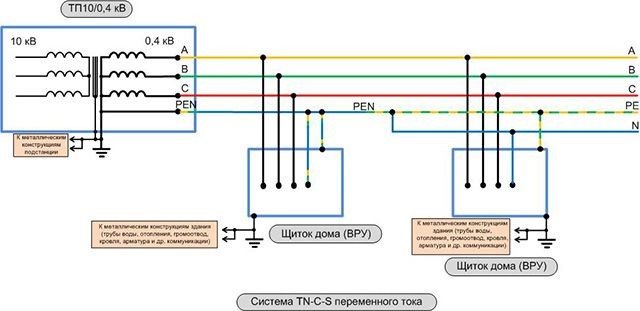

TN-C-S system
How to properly connect the wires
When making a connection between conductors, it is important to create a reliable contact between them. Any violations lead to the formation of electrical resistance in the joint area. This is fraught with the following problems:
• losses of electricity;
• overheating of the cable;
• increased threat of fire.
Incorrect connection is considered when there is too much gap between the wires. In this place, sparking is observed, heat is generated, as a result of which a fire can begin.
The most dangerous is the method of connecting conductors - twisting. Due to such fixation, fires often occur, therefore experts recommend avoiding it, especially when it comes to combining aluminum and copper products into one chain.
Correctly perform the splicing of conductors by soldering or welding the ends to be joined. The split design is equipped with a special tip, which is fixed on the conductor stripped by means of crimping.
A screw terminal box can also be used as a retainer. The design is a housing made of heat-resistant plastic with a socket and a screw. The cleaned ends are joined in the socket and pressed with a screw using a screwdriver.
Another reliable way of connecting conductors is a spring-loaded block. The bare ends of the wire are inserted into the holes and secured by a spring that provides contact.
After finishing the installation, you need to check all sections of the circuit with a tester. The guarantee of the security of private property lies in the careful observance of all rules for connecting fittings. Taking into account the advice of experts and regulatory requirements, it is quite affordable to equip electricity in a private house with your own hands.




